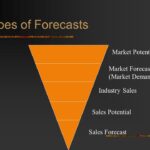A few decades ago, it was widely believed that the most effective way to analyze the markets for trade was to determine the fundamentals, such as the free mind map number of bushels in storage, the current demand figures, the expected harvest yield, etc. Many assumed that Technical Analysis was not useful. Reasons given were that price action is random, or that it ignores the fundamental factors of the underlying asset. The facts are quite the contrary.
Many have come to learn that the old ‘buy and hold’ strategy can be a costly one. Stories abound of those who have found the value of their portfolio has only broken even (or lost value) after holding for several years. The financial crisis of 2008 highlights one of several historical periods where investors have lost millions. While it is always a good idea to know a company’s financial health as well as their future potential in sales/profits, what may be a healthy financial statement and outlook today can look a lot different tomorrow.
Technical analysis focuses on price movement, anticipating price direction based on its ebbs and flows (ie. swings, cycles, etc.). Fundamental factors of any asset is built into price action, as the market discounts everything. In addition, history tends to repeat itself and this repetitive nature of price action can be anticipated and taken advantage of.
Many technicians rely on various indicators that help expose some aspect of historical price data for the use of timing. Where one indicator might highlight some underlying cycle pattern that could help anticipate the next trend change period, another indicator might highlight a markets overbought or oversold condition, all relative to past price action.
The technical analyst relies heavily on price charts. Certain patterns often repeat giving the technician a heads-up to a potential price break. Such patterns are given names, such as the ‘Head-and-sholders’ pattern, the ‘wedge’ or ‘flag’ formation, etc. All of these technical approaches are useful to some degree.
Precise market timing is crucial in today’s volatile markets. Without greater precision in timing, the trader is exposed to a higher degree of risk and can leave more profit on the table. Let me illustrate this.
For the sake of discussion, suppose that the price range of each trading day is 50 points. If your allowable risk exposure (how far you will allow the market to move against your position) is 50 points, you must enter the market on the exact day you expect the move to start in your favor to avoid being stopped out with a loss. If your allowable risk exposure is 100 points, you must be accurate in your timing within +/- one day to avoid getting stopped out with a loss. This highlights the importance of precision market timing.
Now in the real world, each day the price range varies from the next. Depending on how effective your market timing approach happens to be, you may be able to risk less than the average range in points. The less precise your market timing approach happens to be, the more you should initially risk on the trade.
While market timing itself can be loosely done using standard technical indicators, trend lines and moving averages, precision market timing is achievable with good market forecasting methods. Market forecasting for market timing purposes is extremely effective because, unlike most technical indicators that are ‘leading’ or ‘lagging’ in nature, a good market forecasting method can forecast a market turn to an exact day of a trend change. Giving any market forecasting method a small deviation allowance of +/- one day can give any trader an incredible edge in predicting market turns for the purpose of precision market timing and trading.
Some traders are historical legends having used market forecasting methods for precision market timing purposes. Who has not heard of William Delbert Gann (better known as WD Gann)? This financial trader is famous for developing several technical approaches, such as the use of Gann angles or the trend indicator. His forecasting methods included the use of the Square of Nine, cycle analysis and market geometry. By using ‘market forecasting’ tools such as these and others, he is famously reported to have many times turned a small amount of money into a large amount rather quickly.
So there are two main points that I hope you have garnered by reading this article. Point #1 is that in order to better manage your risk exposure and maximize your profit potential, the more precise you need to be with your market timing approach. Point #2 is that the most precise way to time the markets is to take advantage of market forecasting techniques, where often you can time your trades to the exact day of a new move.


